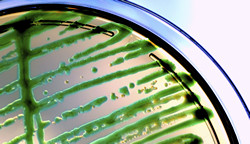Bacterial catalysts a la carte
Pseudomonads are a diverse set of bacteria with metabolic versatility and genetic plasticity that enable them to survive in different environments. They exhibit interesting biotechnological potential, producing high value bioproducts and chemicals. Pseudomonas putida is one of the best-studied species of the Pseudomonads genus that lacks pathogenicity and can be genetically manipulated. P. putida-based applications are hampered by a lack of knowledge of the genotype-phenotype relationships in these bacteria. The scope of the EU-funded ALLEGRO (Biotechnological exploitation of Pseudomonas putida: lego-lizing and refactoring central metabolic blocks through rational genome engineering) project was to generate various P. putida strains following genomic and metabolic manipulation. In this context, researchers targeted DNA elements encoded in the extant chromosome that cause genomic instability and are unnecessary for catalytic functions. They deleted energy-consuming structures on the cell envelope such as flagella, which simplified the genome and rendered it more amenable to manipulation. P. putida can utilise a large number of carbon sources as a means of adapting to different physicochemical conditions. Although the pathways of breaking down molecules with six carbon sources (hexoses) has been elucidated, little is known about how P. putida catabolises alternative carbon sources such as the by-product of the biodiesel industry glycerol. Scientists observed that glycerol triggered both glycolysis and glyconeogenesis in P. putida. Considerable effort went also towards the understanding of the mechanisms employed by P. putida to withstand environmental stress. This would facilitate the manipulation of stress endurance, and assist in translating the knowledge into biotechnological applications. In this context, scientists explored the functions of inorganic polyphosphate - a key player in bacterial stress resistance. They discovered that in P. putida the accumulation of polyphosphate is essential to maintaining metabolic robustness. Overall, the genetically and metabolically manipulated P. putida strains constitute a powerful answer to existing scaffolds used in oil-based biotechnological applications or industrial biocatalysis.







